|
[1]
|
Severino R, Ferrari G, Vu KD, et al. (2015) Antimicrobial effects of modified chitosan based coating containing nanoemulsion of essential oils, modified atmosphere packaging and gamma irradiation against Escherichia coli O157:H7 and Salmonella typhimurium on green beans. Food control 50: 215-222.
|
|
[2]
|
Talebi F, MIsaghi A, Khanjari A, et al. (2017) Evaluation of antimicrobial activity of Poly Lactic Acid (PLA) films containing cellulose nanoparticle and Bunium persicum and Mentha pepperita essential oils (EOs). Ira J Vet Med 11: 289-298.
|
|
[3]
|
Bastarrachea LJ, Denis-Rohr A, Goddard JM (2015) Antimicrobial food equipment coatings: Applications and challenges. Annu Rev Food Sci Technol 6: 97-118.
|
|
[4]
|
Ibrahim S, Voit B (2009) Synthesis and Characterization of Well-Defined Block Copolymers by Combing Controlled Radical and Cationic Polymerization. Macromol symp 275: 59-66.
|
|
[5]
|
Kun E, Marossy K (2013) Evaluation Methods of Antimicrobial Activity of Plastics. Mater Sci Forum 729: 430-435.
|
|
[6]
|
Ahmed J, Hiremath N, Jacob H (2016) Antimicrobial, rheological, and thermal properties of plasticized polylactide films incorporated with essential oils to Inhibit Staphylococcus aureus and Campylobacter jejuni. J Food Sci 81: E419-E429.
|
|
[7]
|
Anuar H, Izzati ANF, Inani SSN, et al. (2017) Impregnation of vinnamon essential oil into plasticised polylactic acid biocomposite film for active food packaging. J Packag Technol Res 1: 149-156.
|
|
[8]
|
Brody AL, Bugusu B, Han JH, et al. (2008) Scientific status summary: innovative food packaging solutions. J Food science 73: R107-R116.
|
|
[9]
|
Suriati L, Utama IMS, Harsojuwono BA, et al. (2020) Incorporating additives for stability of aloe gel potentially as an edible coating. AIMS Agric Food 5: 327-336.
|
|
[10]
|
Greive KA, Barnes TM (2018) The efficacy of Australian essential oils for the treatment of head lice infestation in children: A randomised controlled trial. Australas J Dermatol 59: e99-e105.
|
|
[11]
|
Soliman SSM, Alsaadi AI, Youssef EG, et al. (2017) Calli essential oils synergize with lawsone against multidrug resistant pathogens. Molecules 22: 2223.
|
|
[12]
|
Liu Y, Wang S, Zhang R, et al. (2017) Development of poly (lactic acid)/chitosan fibers loaded with essential oil for antimicrobial applications. Nanomaterials 7: 194.
|
|
[13]
|
Arcan I, Yemenicioglu A (2011) Incorporating phenolic compounds opens a new perspective to use zein as flexible bioactive packaging materials. Food Res Int 44: 550-556.
|
|
[14]
|
Wang J, Qiu C, Narsimhan G, et al. (2017) Preparation and characterization of ternary antimicrobial films of β-Cyclodextrin/allyl isothiocyanate/polylactic acid for the enhancement of long-term controlled release. Materials 10: 1210.
|
|
[15]
|
Ibrahim S, El Saied H, Hasanin M (2019) Active paper packaging material based on antimicrobial conjugated nano-polymer/amino acid as edible coating. J King Saud University Sci 31: 1095-1102.
|
|
[16]
|
Theinsathid P, Chandrachai A, Suwannathep S, et al. (2011) Lead users and early adaptors of bioplastics: A market-led approach to innovative food packaging films. Biobased Mater Bioenergy 5: 17-29.
|
|
[17]
|
Molins RA, Motarjemi Y, Kaferstein FK (2001) Irradiation: a critical control point in ensuring the microbiological safety of raw foods. Food Control 12: 347-356.
|
|
[18]
|
Goudas AE, Riganakos KA, Kontominas MG (2003) Effect of ionizing radiation on physicochemical and mechanical properties of commercial multilayer coextruded flexible plastics packaging materials. Radiat Phys Chem 68: 865-872.
|
|
[19]
|
Chytiri S, Goulas AE, Riganakos KA, et al. (2006) Thermal, mechanical and permeation properties of gamma-irradiated multilayer food packaging films containing a buried layer of recycled low-density polyethylene. Radiat Phys Chem 75: 416-423.
|
|
[20]
|
Van Dijk JAPP, Smit JAM, Kohn FE, et al. (1983) Characterization of poly (D, L-lactic acid) by gel permeation chromatography. J Polym Sci: Polym Chem Ed 21: 197-208.
|
|
[21]
|
Basfar AA, Lotfy S (2015) Radiation-crosslinking of shape memory polymers based on poly (vinyl alcohol) in the presence of carbon nanotubes. Radiat Phys Chem 106: 376-384.
|
|
[22]
|
Xu R, Xia H, He W, et al. (2016) Controlled water vapor transmission rate promotes wound-healing via wound re-epithelialization and contraction enhancement. Sci Rep 6: 24596.
|
|
[23]
|
El-Sayed SM (2020) Use of spinach powder as functional ingredient in the manufacture of UF-Soft cheese. Heliyon 6: e03278.
|
|
[24]
|
Kumar TS, Swaminathan V, Kumar S (2009) Influence of nitrogen, phosphorus and biofertilizers on growth, yield and essential oil constituents in ratoon crop of davana (Artemisia pallens Wall.). Electron J Environ Agric Food Chem 8: 86-95.
|
|
[25]
|
Vaghasiya YK, Parekh JP, Shukla VJ, et al. (2011) Antimicrobial and anti-inflammatory screening of four Indian medicinal plants. Latin American J Pharmacy 30: 661-666.
|
|
[26]
|
Bagamboula CF, Uyttendaele M, Debevere J (2004) Inhibitory effect of thyme and basil essential oils, carvacrol, thymol, estragol, linalool and p-cymene towards Shigella sonnei and S. flexneri. Food Microbiol 21: 33-42.
|
|
[27]
|
Mauriello GDLE, De Luca E, La Storia A, et al. (2005) Antimicrobial activity of a nisin-activated plastic film for food packaging. Lett Appl Microbiol 41: 464-469.
|
|
[28]
|
Seydim AC, Sarikus G (2006) Antimicrobial activity of whey protein-based edible films incorporated with oregano, rosemary and garlic essential oils. Food Res Int 39: 639-644.
|
|
[29]
|
Ibrahim S, Labeeb A, Mabied AF, et al. (2017) Synthesis of super-hydrophobic polymer nanocomposites as a smart self-cleaning coating films. Polym Compos 38: E147-E156.
|
|
[30]
|
Gao H, Qiang T (2017) Fracture surface morphology and impact strength of cellulose/PLA composites. Materials 10: 624.
|
|
[31]
|
Wang J, Gardner DJ, Stark NM, et al. (2018) Moisture and oxygen barrier properties of cellulose nanomaterial-based films. ACS Sustainable Chem Eng 6: 49-70.
|
|
[32]
|
Palacio J, Orozco VH, López BL (2011) Effect of the molecular weight on the physicochemical properties of poly (lactic acid) nanoparticles and on the amount of ovalbumin adsorption. J Braz Chem Soc 22: 2304-2311.
|
|
[33]
|
Fernández-Pan I, Carrión-Granda X, Maté JI (2014) Antimicrobial efficiency of edible coatings in the preservation of chicken breast fillets. Food Control 36: 69-75.
|
|
[34]
|
Abd El-Khalek HH, Mohamed EA (2012) Synergistic effect of certain medicinal plants and amoxicillin against some clinical isolates of Methicilin-Resistant Staphylococcus aureus (MRSA). Int J Pharm Appls 3: 387-398.
|
|
[35]
|
Leimann FV, Gonç alves OH, Machado RA, et al. (2009) Antimicrobial activity of microencapsulated lemongrass essential oil and the effect of experimental parameters on microcapsules size and morphology. Mater Sci Eng C 29: 430-436.
|
|
[36]
|
Paviani L, Pergher SBC, Dariva C (2006) Application of molecular sieves in the fractionation of lemongrass oil from high-pressure carbon dioxide extraction. Braz J Chem Engg 23: 219-225.
|
|
[37]
|
Tzortzakis NG, Economakis CD (2007) Antifungal activity of lemongrass (Cympopogon citratus L.) essential oil against key post harvest pathogens. Innovative Food Sci Emerging Technol 8: 253-258.
|
|
[38]
|
Thippeswamy NB, Naidu KA (2005) Antioxidant potency of cumin varieties—cumin, black cumin and bitter cumin—on antioxidant systems. Eur Food Res Technolo 220: 472-476.
|
|
[39]
|
Iacobellis NS, Lo Cantore P, Capasso F, et al. (2005) Antibacterial Activity of Cuminum cyminum L. and Carum carvi L. Essential Oils. J Agric Food Chem 53: 57-61.
|
|
[40]
|
Guynot ME, Marín S, Setŭ L, et al. (2005) Screening for antifungal activity of some essential oils against common spoilage fungi of bakery products. Food Sci Technol Int 11: 25-32.
|
|
[41]
|
Urbaniak-Domagala W, Krucinska I, Wrzosek H, et al. (2016) Plasma modification of polylactide nonwovens for dressing and sanitary applications. Text Res J 86: 72-85.
|
|
[42]
|
Liu D, Li H, Jiang L, et al. (2016) Characterization of active packaging films made from poly (lactic acid)/poly (trimethylene carbonate) incorporated with oregano essential oil. Molecules 21: 695.
|
|
[43]
|
Liakos IL, Grumezescu AM, Holban AM, et al. (2016) Polylactic Acid—Lemongrass Essential Oil Nanocapsules with Antimicrobial Properties. Pharmaceuticals 9: 42.
|
|
[44]
|
Shavisi N, Akhondzadeh Basti A, Khanjari A, et al. (2017) In vitro antibacterial activity of polylactic acid film incorporated with ethanolic propolis extract and ziziphora clinopodioides essential oil. Food Qual Hazards Control 4: 3-8.
|
|
[45]
|
Gao Y, Cranston R (2008) Recent advances in antimicrobial treatments of textiles. Text Res J 78: 60-72.
|
|
[46]
|
Li Z, Lee D, Sheng X, et al. (2006) Two-level antibacterial coating with both release-killing and contact-killing capabilities. Langmuir 22: 9820-9823.
|
|
[47]
|
Salvatore M, Marra A, Duraccio D, et al. (2016) Effect of electron beam irradiation on the properties of polylactic acid/montmorillonite nanocomposites for food packaging applications. J Appl Polym Sci 133: 42219.
|
|
[48]
|
Han J, Castell-Perez ME, Moreira RG (2007) The influence of electron beam irradiation of antimicrobial-coated LDPE/polyamide films on antimicrobial activity and film properties. LWT-Food Sci Technol 40: 1545-1554.
|
|
[49]
|
Riganakos KA, Koller WD, Ehlermann DAE, et al. (1999) Effect of ionizing radiation on properties of monolayer and multiplayer flexible food packaging materials. Radiat Phys Chem 54: 527-540.
|
|
[50]
|
Fenin AA, Ermakov VI, Revinam AA (2008) Radiation-chemical synthesis of polymer polyols and related composites, Theor Found of chem Eng 42: 662-665.
|
|
[51]
|
Han J, Castell-Perez M E, Moreira R G (2008) Effect of food characteristics, storage conditions, and electron beam irradiation on active agent release from polyamide-coated LDPE films. J Food Sci 73: E37-E43.
|
|
[52]
|
Acharya A, Mohan H, Sabharwal S (2002) Radiation induced polymerization and cross linking behavior of N-hydroxy methyl acrylamide in aqueous solutions. Radiat Phys Chem 65: 225-232.
|
|
[53]
|
Han J, Castell-Perez ME, Moreira RG (2006) The Influence of Electron Beam Irradiation on the Effectiveness of Trans-cinnamaldehyde-coated LDPE/Polyamide Films. Food Sci 71: E245-E251.
|










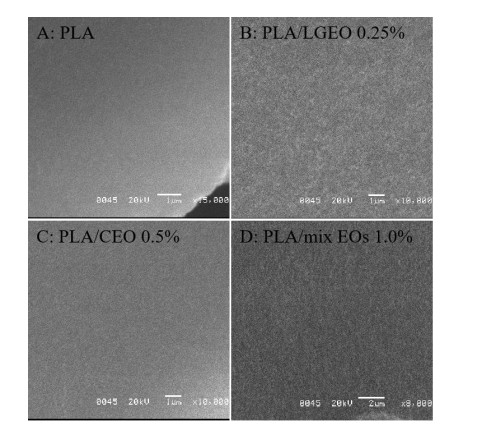
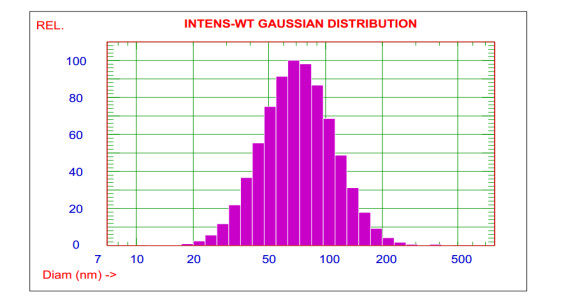
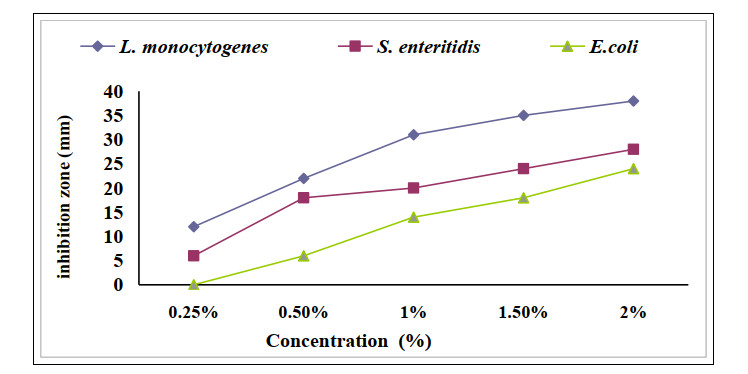
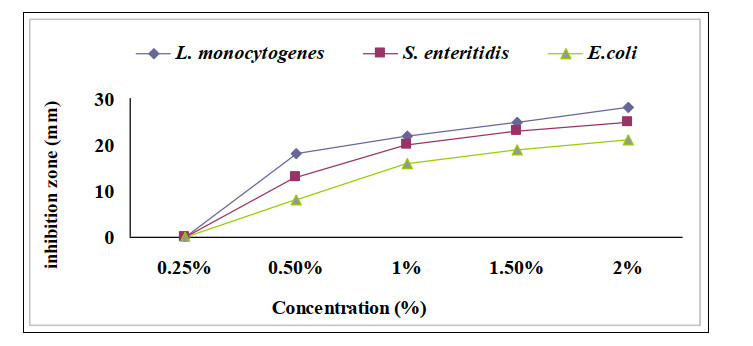
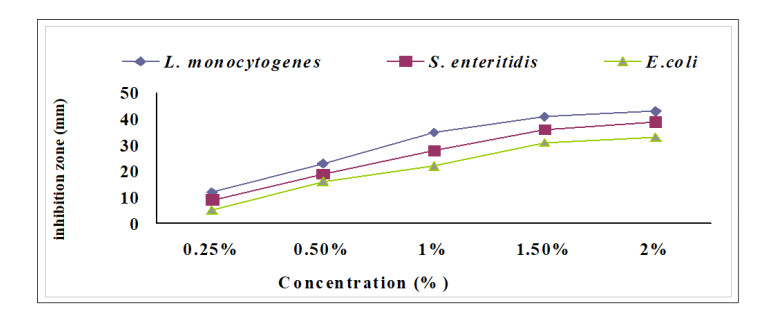


 DownLoad:
DownLoad: